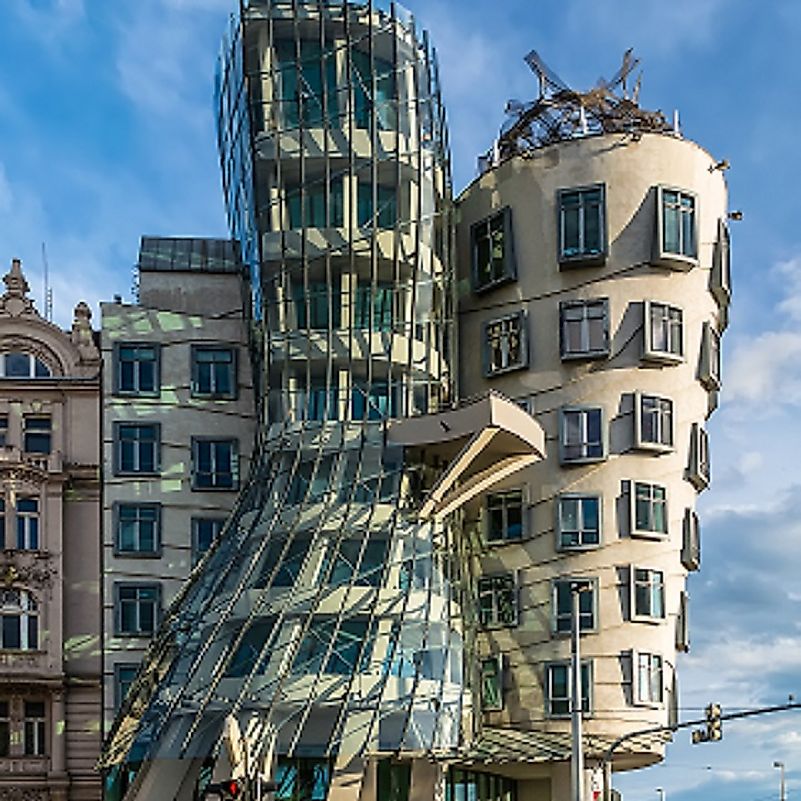The Czech People - Cultures of the World

5. Description
Western Slavic tribes, displacing earlier Celtic tribes inhabiting Bohemian territory, were gradually united under the dominant Czech Slavs starting in the Sixth Century, culminating in the crowning of the first Czech King, Bohemian Vratislaus II, in 1085. Today, the term ‘Czech’ refers to the inhabitants of the Czech Republic, which includes Bohemia, its larger, western area, and Moravia, which lies in the east. The country is bounded by Poland to the north, Germany to the west, Austria in the south, and the Republic of Slovakia (to which it was formerly united with) to the east. The Czech language, an an Indo-European language, is part of the West Slavic sub-branch of the larger group of Slavic languages.
4. Architecture
The Czech Republic is a fairly densely populated country, and about 65% of its population live in cities and towns today. Prague, the Czech capital, has 1.3 million inhabitants, while Brno, the capital of the Moravian region, has around 400,000. The tendency for Czechs to leave the countryside for towns and cities predates the founding of Czechoslovakia (the politically united Czech and Slovak republics) in 1918, and Prague has only continued to expand since then. Its new, cheaply built apartment blocks contrast with the astonishing wealth and variety of central Prague’s historical architecture, the latter of which is one of the major draws to over 17 million visitors who frequent the city each year. Such notable pieces of Prague's construction include the modern Dancing House (late 20th Century), the National Theater (19th Century), the Church of St. Nicholas (18th Century), and the Royal Summer Palace (16th Century).
3. Cuisine
Traditional Czech foods tend to be heavy, often based on meat, primarily pork, beef, and poultry, and their organ meats, such as kidneys, livers, and brains. These are served alongside such staples as potatoes or dumplings, and often accompanied by gravies or rich sauces. Soups are also very popular, particularly at lunch-time, with the goulash-style "gulasova" soup being one of the favorites. The Czech nation also has a pronounced sweet tooth, with a "cuckrarna’on" on almost every corner selling a large range of baked goods, such as "buchty" (small, square-shaped yeast buns filled with preserves), and "kolace" (small, flat, round, flour cakes, usually topped with poppy seeds, plum jam, or sweetened farmers cheese).
2. Cultural Significance
The arts continued to thrive under the Communist regime of Czechoslovakia from 1948 to 1989, mostly because the arts and artists were generously supported by the state. Tickets for theatrical and musical events were cheap, and within the reach of most people. Still, many artists were not happy with such state support, as they had to ensure their work followed what the Communist Party's political agenda and ideologies dictated in return. Though state support ended in 1989, prestigious artistic institutions such as the National Theater continue to receive it. Czechs have traditionallly read more than they have watched plays, however, and have been served by many great writers and poets alike, such as the world-renowned novelist Milan Kundera, and the Nobel Prize-winning poet Jaroslav Seifert.
1. Threats
Though the Czech people are inevitably becoming much like people elsewhere in Western European democracies, with old customs and habits changing under commercial and global popular culture pressures, they face no existential threat to themselves or their homeland. Though some, along with their Slavic cousins in other Central and Eastern European countries, look with trepidation at the rise of a resurgent Russia. The country is, however, firmly embedded in the European Union, and since 1999 has been a member of NATO. These alliances, however, do not completely reassure a people who have seen themselves become conquered by various foreign powers through the ages.







